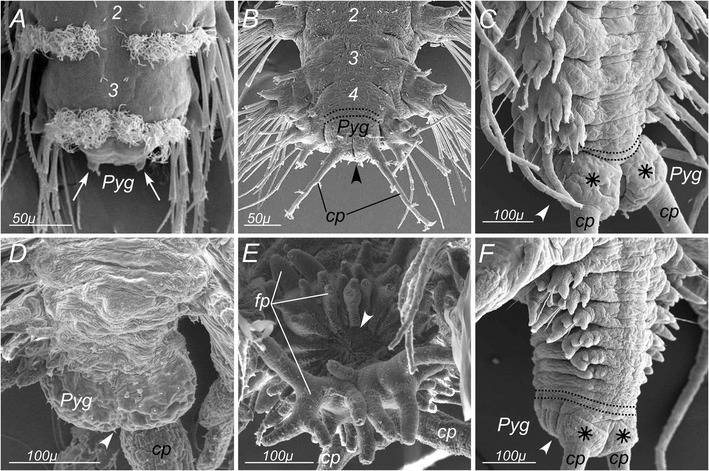Figure 1.

Scanning electron micrographs of P. dumerilii pygidium at different stages of the life cycle. A: pygidium of the 3-day larva, view from the dorsal side. Arrows show developing pygidial cirri. B: pygidium of the 4-segmented larva, view from the dorsal side. C: posterior part of the young atokous worm, view from the ventral side. D: dorsal view of epitokous female worm pygidium. E: pygidium of epitokous male worm, view from the dorsal side. F: posterior part of the worm after caudal regeneration, view from the dorsal side. Numbers in A and B mark chaetigerous segments in the antero-posterior direction. Arrowheads point the position of the anus. Asterisks show bases of pygidial cirri. Dotted lines show the borders of the segment addition zone. Pyg – pygidium; cp – pygidial cirri; fp – finger-like protrusions of mature male pygidium.
